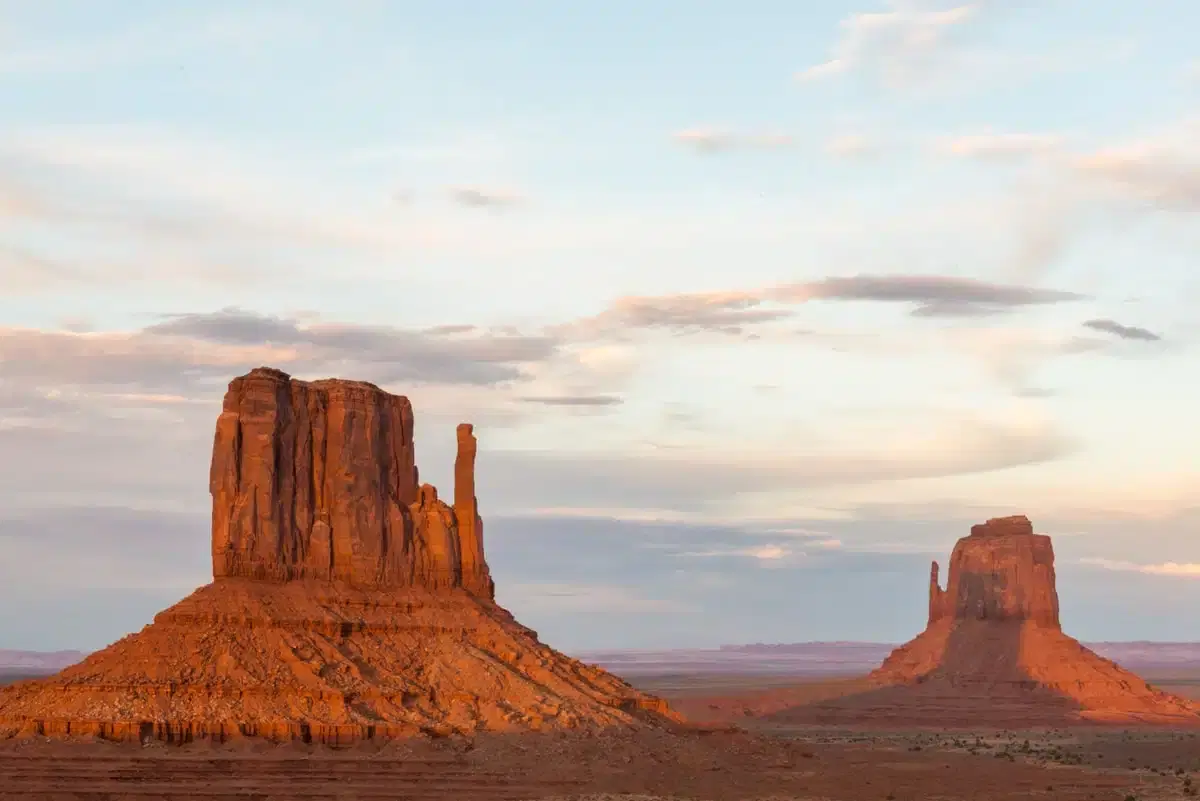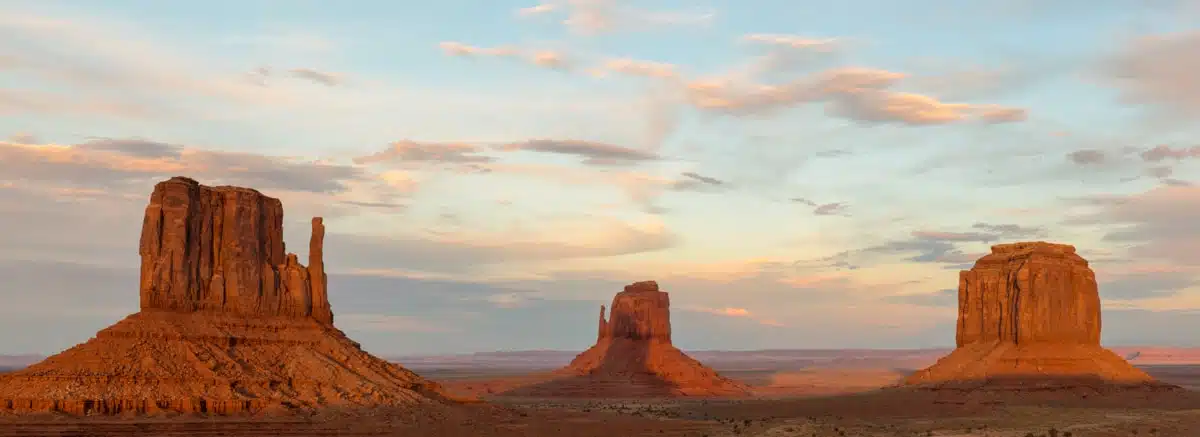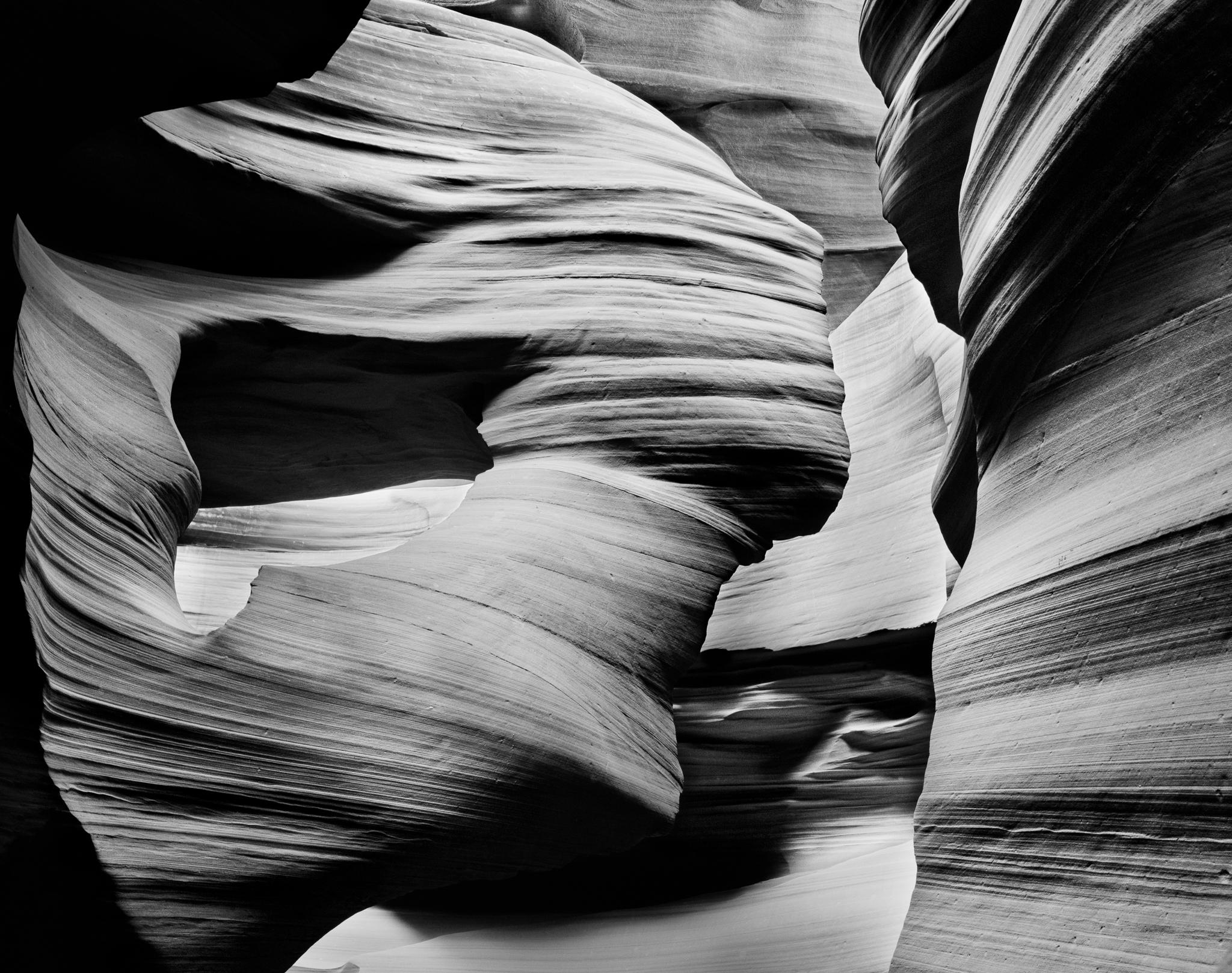Mitten Shadow Event
Discover the unique Mitten Shadow Event that occurs twice yearly in Monument Valley Navajo Tribal Park, where the setting sun aligns the West Mitten's shadow perfectly onto the East Mitten just before sunset.

A Rare Celestial Alignment in the Desert
Twice a year a unique event occurs in Monument Valley Navajo Tribal Park that draws photographers and nature enthusiasts from around the world. In March and again in September, the Mitten Shadow event takes place where the setting sun lines up with the two iconic mittens so the shadow of the West Mitten falls directly onto the East Mitten just before sunset. This celestial alignment creates a dramatic and fleeting moment that exemplifies the intersection of landscape photography, precise timing, and the natural geometry of the American Southwest.
Understanding the Mitten Shadow Phenomenon
The Mitten Shadow Event is a result of the sun's position relative to these two iconic sandstone formations. The West and East Mitten Buttes, named for their distinctive thumb-like protrusions that resemble mittens, stand approximately 300-400 feet apart. During the equinox periods in spring and fall, the sun sets at an angle that causes the 400-foot tall West Mitten to cast its elongated shadow directly across the valley floor onto the face of the East Mitten.
What makes this event particularly special is its ephemeral nature. The shadow alignment only lasts for about 15-20 minutes, and the optimal viewing window occurs only during a few days surrounding the equinoxes. The shadow gradually creeps across the valley floor as the sun descends, creating a dynamic scene that changes moment by moment. For photographers, this means working quickly and being prepared with multiple compositions to capture the various stages of the event.
Planning for Unpredictable Desert Weather
I made my way to Monument Valley in March to capture this event, but the weather forecast called for partly cloudy skies—somewhat of a rare event this time of year in Arizona. The desert Southwest is typically characterized by clear, sunny days, especially during March, but atmospheric conditions can be unpredictable. When I arrived at my chosen vantage point several hours before sunset, the sun was mostly blocked by the clouds, but it kept breaking through every once and a while, creating dramatic light beams and constantly changing conditions.
As a landscape photographer, you learn to work with whatever conditions nature provides. While clear skies might seem ideal for the Mitten Shadow Event, partially cloudy conditions can actually add drama to the scene. The interplay between light and shadow becomes more dynamic, with the shadow appearing and disappearing as clouds pass overhead. I didn't have much choice but to stay and hope for the best, which is exactly what I did. This patience is essential in landscape photography—sometimes the best images come from waiting out challenging conditions rather than giving up when circumstances aren't perfect.
Finding a Unique Perspective
I decided to try to find a different composition from the typical Mitten Shadow photographs I had seen. Most images of this event position the two mittens close together in the frame, shot from the popular viewpoints along the main valley loop road. Instead, I drove around the 17-mile valley loop to scout various vantage points, looking for a perspective that would offer something different while still capturing the essential elements of the shadow event.
The reason I chose my final location was its versatility. Not only could I capture the shadow falling on the East Mitten from this angle, but I could also create a balanced panoramic composition that included Merrick Butte and other valley formations. This wider perspective provides context for the event, showing how the mittens relate to the broader Monument Valley landscape. The elevated position also allowed me to capture the shadow's path across the valley floor, adding depth and dimension to the image.
The Golden Moment
Fortunately for me, just before sunset the sun did break through the clouds at least partially, allowing me to capture the shadow alignment. While the cloud cover diffused the shadow somewhat, making it less sharply defined than it would be on a perfectly clear day, it also created a softer, more ethereal quality to the light. The warm glow of the setting sun illuminated the red sandstone formations while the shadow created a diagonal line across the scene, drawing the viewer's eye from the West Mitten to the East Mitten.

Monument Valley panorama showing the balanced composition during the Mitten Shadow Event
Technical Considerations for Photographing the Event
Capturing the Mitten Shadow Event presents several technical challenges. The contrast between the brightly lit formations and the deepening shadows requires careful exposure management. I typically use graduated neutral density filters to balance the bright sky with the darker foreground, ensuring detail is preserved in both areas. The changing light conditions during the 15-20 minute event window mean that exposure settings need constant adjustment.
For this shoot, I worked with both my large format 4x5 camera and a digital camera to ensure I captured the event. The large format camera provides unmatched detail and tonal range, but requires more setup time between shots. Having a backup digital system allowed me to document the entire progression of the shadow while also creating the carefully composed large format images. A sturdy tripod is essential, as even slight camera movement during the long exposures can result in soft images.
Lessons Learned and Future Plans
Even though the sun never completely broke through the clouds, making the shadow less prominent than it would be under ideal conditions, I still came away with several images that I am very happy with. The partially cloudy conditions created a different interpretation of the event than I had originally envisioned, but this is part of the creative process in landscape photography. Sometimes the conditions you get aren't the conditions you wanted, but they offer their own unique opportunities.
Of course, this also means I have a perfect reason to return to Monument Valley for the September occurrence of the Mitten Shadow Event. The fall event offers different atmospheric conditions than the spring event—typically clearer skies, different vegetation colors in the valley, and a different quality of light as the sun sets at a slightly different angle. Each occurrence of the event is unique, influenced by weather, atmospheric conditions, and the subtle changes in the sun's path.
Visiting Monument Valley for the Mitten Shadow Event
For photographers interested in witnessing and photographing the Mitten Shadow Event, planning is essential. The event occurs during narrow windows in mid-March and mid-September, typically within a few days of the equinoxes. The exact dates vary slightly from year to year based on the sun's position. I recommend arriving several days early to scout locations, as the best vantage points require exploration and may involve hiking to elevated positions.
Monument Valley Navajo Tribal Park charges an entrance fee and requires permits for professional photography. The 17-mile scenic loop road provides access to various viewpoints, though some of the best positions for the Mitten Shadow Event may require driving on unpaved sections of the loop. A high-clearance vehicle is recommended, especially after rain. Remember that Monument Valley is sacred Navajo land, and visitors should respect all posted regulations and cultural sites.
The Cultural Significance of Monument Valley
While the Mitten Shadow Event is a photographic opportunity, it's important to remember that Monument Valley holds deep cultural and spiritual significance for the Navajo Nation. The formations, including the Mittens, have been part of Navajo oral traditions and beliefs for generations. As photographers, we are guests in this sacred landscape, and our presence should be respectful and mindful of the cultural importance of these places.
The Navajo name for Monument Valley is Tsé Biiʼ Ndzisgaii, which means "Valley of the Rocks." The towering sandstone formations have been shaped over millions of years by erosion, creating the iconic landscape that has become synonymous with the American West. Understanding and respecting this cultural context adds depth to our photographic practice and helps ensure that these sacred places remain protected for future generations.
Planning Your Monument Valley Visit
The Mitten Shadow Event is just one of many remarkable photographic opportunities in Monument Valley. Whether you're visiting specifically for the shadow alignment or planning a more comprehensive photography trip, I've created a detailed Monument Valley Photography Guide covering the best locations, optimal times for photography throughout the day and year, equipment recommendations, practical logistics, and respectful visiting practices. This comprehensive guide will help you make the most of your time in this legendary landscape, regardless of when you visit.
Explore Related Photography
Related Posts

Investment-Grade Photography: A Collector's Guide to Fine Art Prints
What makes fine art photography a legitimate investment? Learn how limited editions, archival materials, certificates of authenticity, and market factors determine the long-term value of museum-quality landscape prints.

Print Sizing Guide: Choosing the Right Size for Every Room
A comprehensive guide to selecting the perfect print size for different rooms and wall spaces. Learn the formulas and visual principles that ensure your landscape photography makes maximum impact without overwhelming the space.

Southwest Photography & Interior Color Palettes
A designer's guide to integrating Southwest landscape photography with interior color schemes. Learn how earth tones, desert palettes, and natural color relationships create harmonious spaces in both residential and commercial projects.
